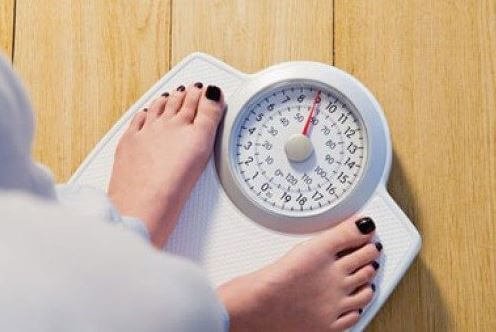How to Calculate Your Daily Calorie Intake

Calorie or energy expenditure is the relation between ‘ingested’ energy and the energy that the body needs. In this article you’ll learn how to calculate it and what to do to increase or decrease it.
What you need to know about calorie intake
In order to keep an energetic balance, your consumed energy must be equal to your used energy.
In case we eat more than we burn, weight gain is a consequence. If you ingest less than the essential amounts that you need, you might lose weight but beware, because you could face malnutrition due to your body starting to use up its reserves.

The diet you follow will be strongly related to your daily calorie intake, as well as to your age, level of physical activity and your daily activities. It’s not about just eating for when you want to gain weight or living in the gym for when you want to lose it. A well-planned, nutritious diet will help you to reach your goal.
The number of calories you take in will vary depending on your goal. For example, if you want to lose weight, you’ll follow a hypocaloric diet (with less calories than you need) and if you want to gain muscle mass, you’ll follow a hypercaloric one (with more calories).
You may also follow a normocaloric diet to maintain your weight, if you’ve already reached your goal.
Calorie intake: how to calculate it?
It doesn’t matter what your goal is, it’s fundamental to first calculate your calorie and energy expenditure. There are different formulas to do this.
First you should know your Basal Metabolic Rate (BMR), this rate regards the calories that you must consume to meet your most essential needs: breathing, blood circulation, digestion, etc. The most used formula to calculate the BMR is called the, Harris-Benedict:
- Women: 655 + (9.6 x your weight in kilograms) + (1.8 x your height in centimeters) -(4.7 x your age in years)
- Men: 66 + (13.7 x your weight in kilograms) + (5 x your height in centimeters) -(6.5 x your age in years)

For example, a woman who weights 65 kilograms, is 160 centimeters tall and 35 years old will have a BMR of 1402 calories per day. Another option, a bit less accurate, but quicker to do, is to multiply your weight by 24 and then by 0.9 for women, and another 24 for men.
So, with the original formula we know the exact amount of calories we each need, to maintain the body functioning at rest.
Then, to that quantity you’ll have to add the expenditure of the physical activity you do.
- Sedentary: BMR x 1.2
- Slightly active (you exercise 1 to 3 days per week): BMR x 1.3
- Moderately active (you exercise 3 to 5 times per week): BMR x 1.5
- Vigorously active (you exercise every day): BMR x 1.7
- Extremely active (you exercise intensely or at a professional level, every day): BMR x 1.9
The woman from our previous example goes to the gym three times a week, so her caloric expenditure is 1822. If her goal is to lose weight, then she’ll have to follow a calorie intake that goes below that number. Instead, if she wants to gain muscle, then she’ll have to eat more calories.
Talk to a doctor about your goal
Keep in mind that when it comes to biology, not everything is as strict and precise. That’s why you may use these formulas to get a reference value, but not as the exact and only truth.
Therefore, it’s always good to consult with a nutritionist that knows exactly what your needs are. A specialist will design a diet to suit your goals, considering different aspects, such as activity level, age, quantity of physical activity and medical history.
Calorie or energy expenditure is the relation between ‘ingested’ energy and the energy that the body needs. In this article you’ll learn how to calculate it and what to do to increase or decrease it.
What you need to know about calorie intake
In order to keep an energetic balance, your consumed energy must be equal to your used energy.
In case we eat more than we burn, weight gain is a consequence. If you ingest less than the essential amounts that you need, you might lose weight but beware, because you could face malnutrition due to your body starting to use up its reserves.

The diet you follow will be strongly related to your daily calorie intake, as well as to your age, level of physical activity and your daily activities. It’s not about just eating for when you want to gain weight or living in the gym for when you want to lose it. A well-planned, nutritious diet will help you to reach your goal.
The number of calories you take in will vary depending on your goal. For example, if you want to lose weight, you’ll follow a hypocaloric diet (with less calories than you need) and if you want to gain muscle mass, you’ll follow a hypercaloric one (with more calories).
You may also follow a normocaloric diet to maintain your weight, if you’ve already reached your goal.
Calorie intake: how to calculate it?
It doesn’t matter what your goal is, it’s fundamental to first calculate your calorie and energy expenditure. There are different formulas to do this.
First you should know your Basal Metabolic Rate (BMR), this rate regards the calories that you must consume to meet your most essential needs: breathing, blood circulation, digestion, etc. The most used formula to calculate the BMR is called the, Harris-Benedict:
- Women: 655 + (9.6 x your weight in kilograms) + (1.8 x your height in centimeters) -(4.7 x your age in years)
- Men: 66 + (13.7 x your weight in kilograms) + (5 x your height in centimeters) -(6.5 x your age in years)

For example, a woman who weights 65 kilograms, is 160 centimeters tall and 35 years old will have a BMR of 1402 calories per day. Another option, a bit less accurate, but quicker to do, is to multiply your weight by 24 and then by 0.9 for women, and another 24 for men.
So, with the original formula we know the exact amount of calories we each need, to maintain the body functioning at rest.
Then, to that quantity you’ll have to add the expenditure of the physical activity you do.
- Sedentary: BMR x 1.2
- Slightly active (you exercise 1 to 3 days per week): BMR x 1.3
- Moderately active (you exercise 3 to 5 times per week): BMR x 1.5
- Vigorously active (you exercise every day): BMR x 1.7
- Extremely active (you exercise intensely or at a professional level, every day): BMR x 1.9
The woman from our previous example goes to the gym three times a week, so her caloric expenditure is 1822. If her goal is to lose weight, then she’ll have to follow a calorie intake that goes below that number. Instead, if she wants to gain muscle, then she’ll have to eat more calories.
Talk to a doctor about your goal
Keep in mind that when it comes to biology, not everything is as strict and precise. That’s why you may use these formulas to get a reference value, but not as the exact and only truth.
Therefore, it’s always good to consult with a nutritionist that knows exactly what your needs are. A specialist will design a diet to suit your goals, considering different aspects, such as activity level, age, quantity of physical activity and medical history.
This text is provided for informational purposes only and does not replace consultation with a professional. If in doubt, consult your specialist.








